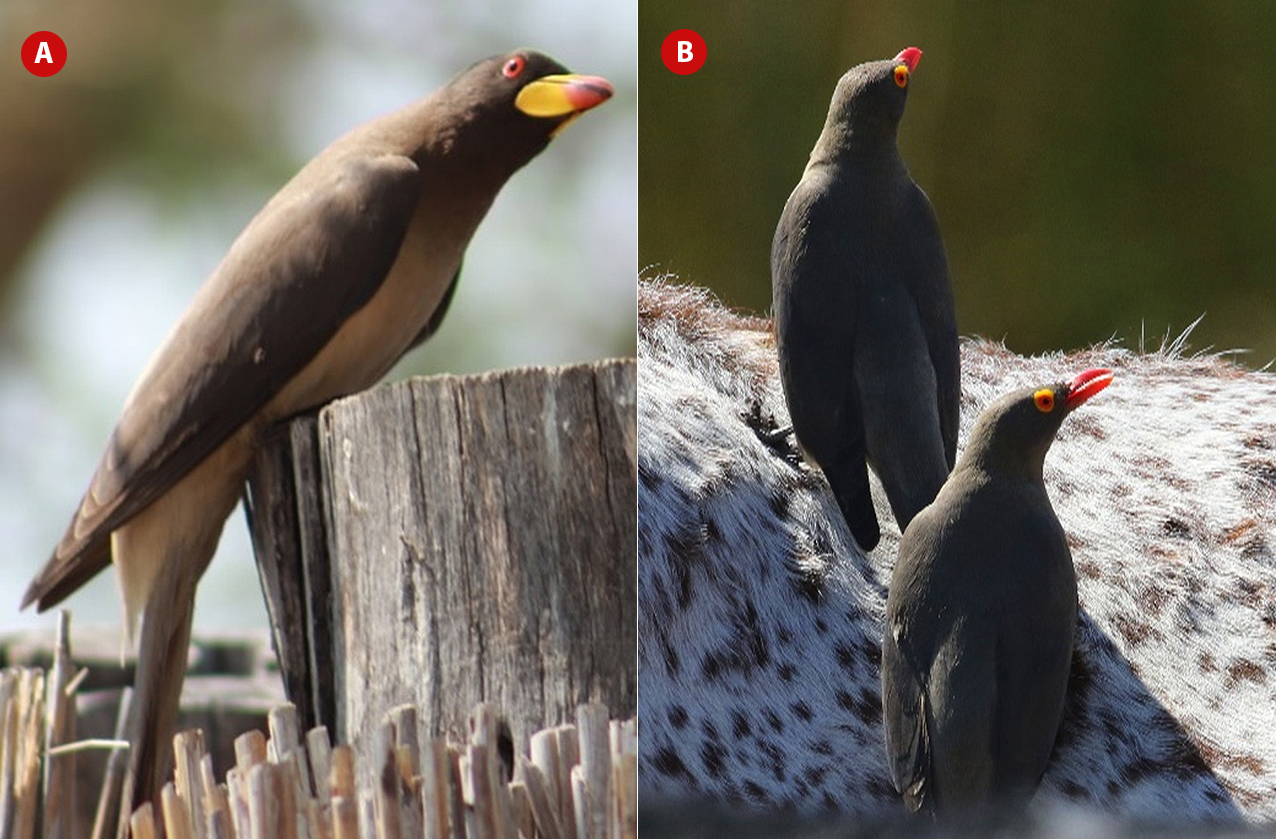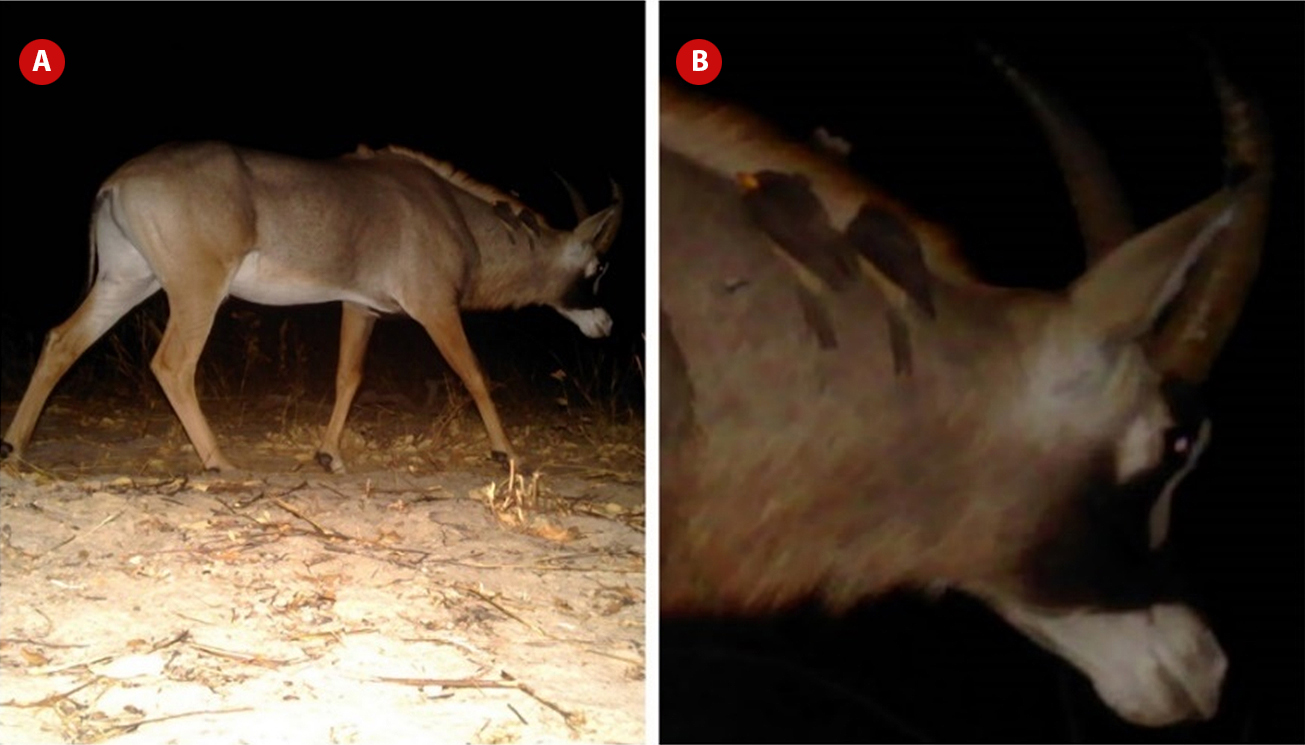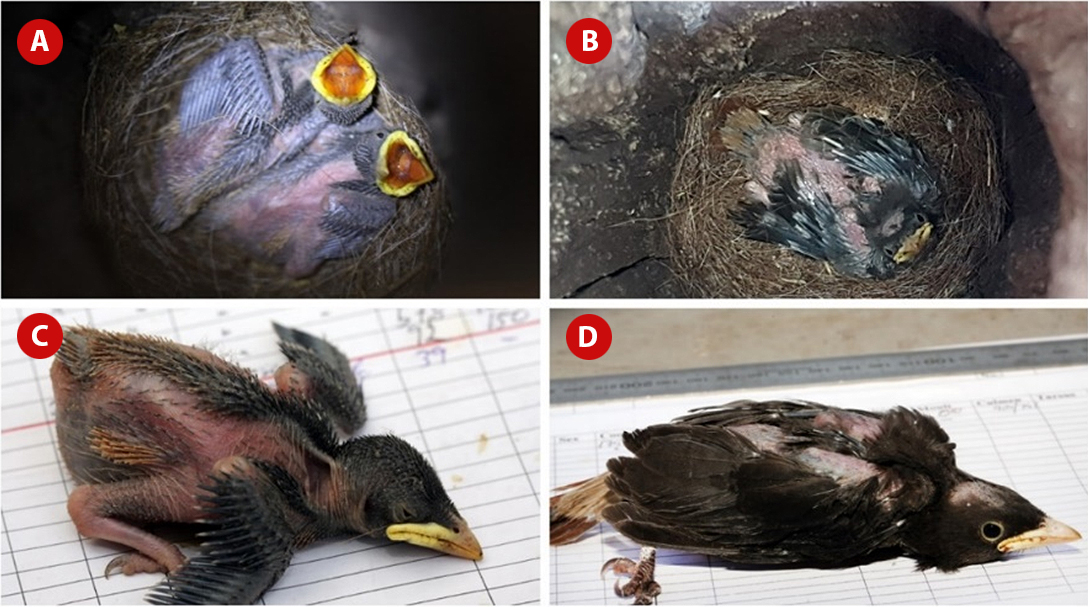There are two distinct species of oxpeckers in sub-Saharan Africa; the red-billed (Buphagus erythrorhynchus) and the yellow-billed oxpecker (Buphagus africanus). Oxpeckers are often assumed to be in a symbiotic relationship with their hosts, wherein both parties derive benefits from the relationship. Specifically, the oxpeckers accrue a ready food supply in the form of the tick burden on their hosts, whilst the hosts are simultaneously relieved of this burden, thereby deriving significant health benefits. Whilst oxpeckers feed on ectoparasites, such as ticks, the fact that they also open up or exacerbate wounds on the host animal has led to the suggestion that oxpeckers are also parasites. Thus, the precise nature of the interaction between oxpeckers and their mammal hosts remains ambiguous and is the subject of considerable debate.

Studies have confirmed that, unlike the red-billed oxpeckers, the yellow-billed oxpeckers do not leave their host even during the night, they do leave only where there is a continual disturbance after which they will quickly return. In 2018, scientists at Tanzania’s Serengeti National Park made an incredible discovery of something often stated in the literature. The scientists set up camera traps, and, to their surprise, oxpeckers were captured sleeping on a giraffe (Giraffa camelopardalis) at night, leading them to conclude that the giraffe served as a “bed and breakfast”. This means that the birds spend the night on the animals and are served fresh breakfast in the form of ticks and other ectoparasites on the animal in the morning. This allows them to save time and energy searching for hosts to feed on, and during the day the birds embark riding on their hosts to have a nap and be transported to a water body to drink much-needed water. The primary source of food for oxpeckers consists of ticks. However, dead animal skin, blood, tears, sweat, and mucus from large African mammals form part of oxpecker diets. As a result of this confirmation, my curiosity grew, and I spent several weekends for three years in the Salambala Conservancy of north-eastern Namibia setting up camera traps with no avail, until 2022, when we had a breakthrough. Actually, my MSc. student working on leopards in Bwabwata National Park made an accidental discovery, while busy with another project. To cut a long story short, he had camera traps set up to estimate leopard density, range pattern, and home range. While browsing through dozens of photographs captured by these cameras, his attention was drawn to this one photograph of a roan antelope with two objects on its neck. He initially thought the objects were bats, but after zooming in, he realised they were oxpeckers. He immediately sent me the photo, and I knew without a doubt that these were the yellow-billed oxpeckers. At the very least, we have vital material that will be added to oxpecker’s existing knowledge, and such new leads will undoubtedly elicit more questions that need to be answered. As a biologist, such information is critical to the ecology and conservation of yellow-billed oxpeckers, which, as far as researchers are concerned, are on the verge of extinction.

Meanwhile, when it comes to breeding, yellow-billed oxpeckers nest and lay eggs in trees. They are dependent on natural cavities or those constructed by other species such as barbets and woodpeckers, and they line the cavities with grass, dung, and animal hair.

During the breeding season, oxpeckers usually pluck the hair from ungulate hosts to use as “breeding platforms”. As a result, these hosts are essential to the breeding success of oxpeckers.
In the Salambala Conservancy, oxpeckers are frequently observed during the day feeding primarily on cattle and ten other ungulate host species: African buffalo (Syncerus caffer), duiker (Sylvicapra grimmia), giraffe, hippopotamus (Hippopotamus amphibius), impala (Aepyceros melampus), kudu (Tragelaphus strepsiceros), roan antelope, warthog (Phacochoerus africanus), wildebeest (Connochaetes taurinus) and plains zebra (Equus quagga) – which migrate seasonally between Namibia and Botswana.





